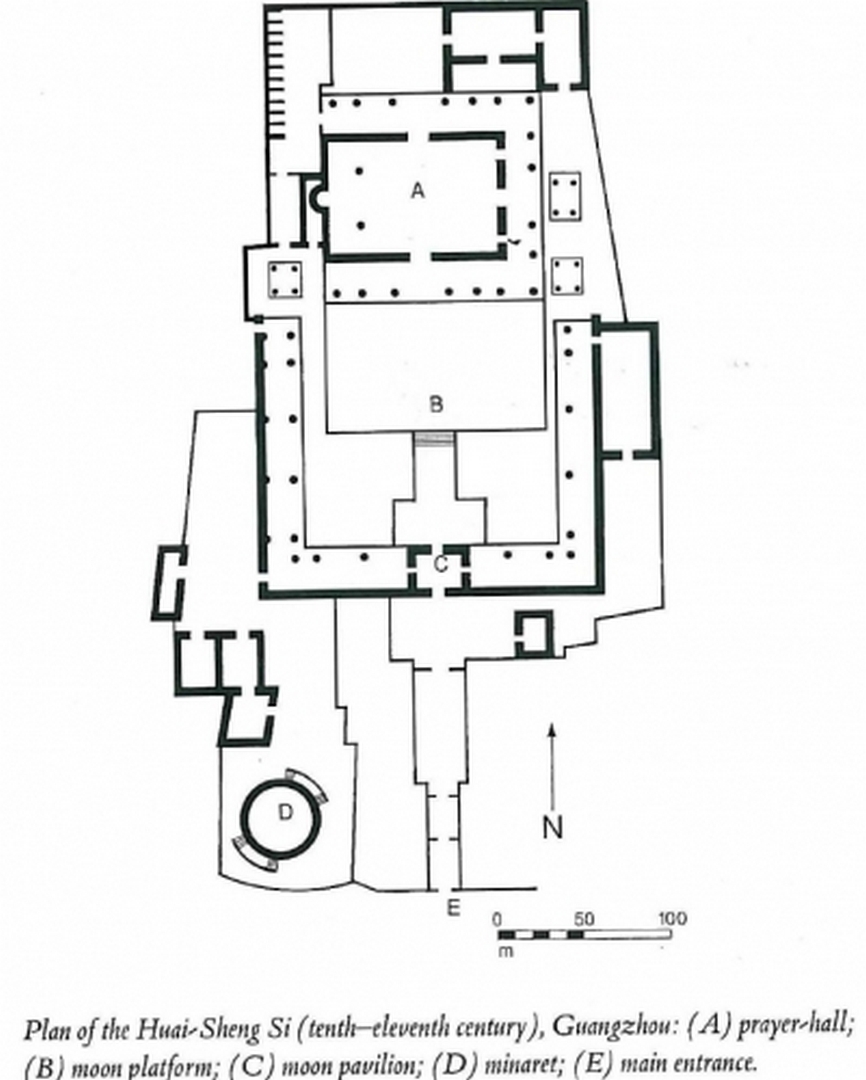Description
Property Name: The Great Mosque of Guangzhou
Inventory No: 86-20-1
Date of infill of the inventory form: 2009-08-13
Country (State party): China
Province : Guangdong
Town: Guangzhou
Geographic coordinates: 23° 7′ 31.96″ N
113° 15′ 12.77″ E
Historic Period: 17th century, 2nd half
Year of Construction: rebuilt in 1695
Style: Arabshahid
Original Use: Mosque
Current Use: Mosque
Architect: Abi Waqqas
Significance
The mosque is important as being the first Islamic monument in China. During the 7th century, Abi Waqqas, who was the uncle of the Prophet maternally; arrived to Guangzhou and was told to built three mosques in 3 different cities including Guangzhou. This period is overlapping with the period, when Islam was first introduced to China via the harbor cities. Nevertheless it is not certain whether the mosque is the first Islamic monument in China or not. The complex had had several intervensions and reconstructions, but the minaret is also noticable as being a unique one in China, carrying both Arabic and Chinese characteristics. The inscriptions indicate that the minaret belongs to an earlier period (about the 7th centuries). Architecturally, the mosque complex has the traditional Chinese details adopted to Islam, meeting the religious ritual requirements. The western region style has been reflected to the ensemble. Dougong brackets and double eave roofs are characteristics of Chinese construction traditions. Additionally, the minaret with 36 meters height is an important landmark for the city and until recently it has been the tallest structure of Guangzhou.
Selection Criteria
ii. to exhibit an important interchange of human values, over a span of time or within a cultural area of the world, on developments in architecture or technology, monumental arts, town-planning or landscape design
iii. to bear a unique or at least exceptional testimony to a cultural tradition or to a civilization which is living or which has disappeared
vi. to be directly or tangibly associated with events or living traditions, with ideas, or with beliefs, with artistic and literary works of outstanding universal significance
State of Preservation
Although there is no definite evidence of the construction date, the ensemble is believed to be built first in the 7th century, however today’s design is thought to be first constructed in the 14th century. The complex had many interventions by the time, first of them is a rebuilding that took place in 1350. It was rebuilt again in 1695 after it has been destroyed by a fire. The main prayer hall is known to be reconstructed in 1935 and had some different designs. The minaret, which is an important landmark is a well preserved, authentic structure.
References
Frishman, Martin- Khan Hassan Uddin. The Mosque History Architectural Development and Regional Diversity, London 1994
Cheng, Jing Qi. Islamic Architecture in China. In The Changing Rural Habitat; Volume 2 : Background Papers. Brian Brace Taylor (ed). Singapore: Concept Media/The Aga Khan Award for Architecture. 1982.
http://www.archnet.org



